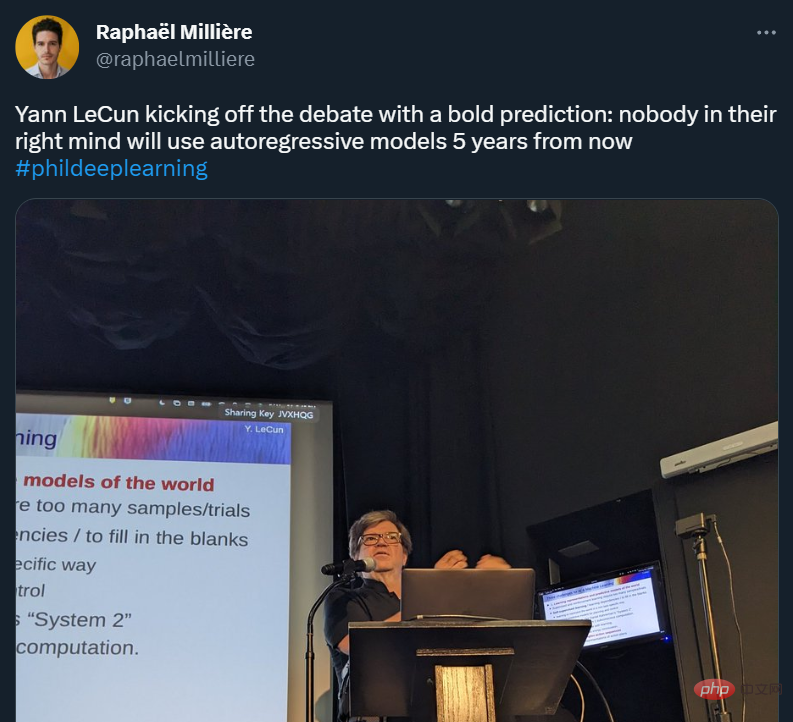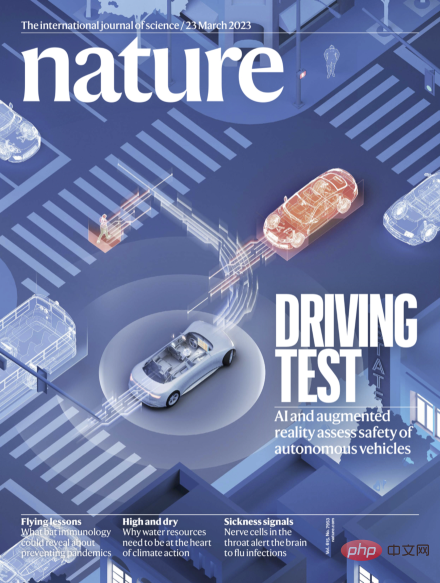 Technology peripherals
Technology peripherals AI
AI AI predicts fire 'flashover' within 30 seconds with an accuracy of 92.1%, which may help save firefighters' lives in the future
AI predicts fire 'flashover' within 30 seconds with an accuracy of 92.1%, which may help save firefighters' lives in the futureDuring this period, the weather is extremely hot and dry, and it is also a time when fires are most likely to occur.
There have been some fire incidents one after another recently, and the news of the sacrifice of firefighters is heartbreaking. The greatest threat to firefighters in fires is actually deflagration. In just two days, there were two accidents in which firefighters died due to deflagration.

This kind of deflagration phenomenon is often caused by the burning of indoor fires inside the building, which fills every room in the room. Deflagration occurs when combustible gases and incompletely burned gases reach a certain concentration.
At this time, the combustibles in other rooms in the room that were not exposed to the fire were also ignited and burned. That is, with a "boom", all the combustibles in the room were ignited, so the entire The process is also called "flashover."

It is precisely because of the unpredictability of "flashover" that it is so dangerous.
This week, a study leveraged graph neural networks (GNN) to build a system to learn relationships between different data sources (represented as nodes and edges) in simulated fires , thereby predicting in advance whether the "flashover" phenomenon will occur in the next 30 seconds.
This research is expected to help firefighters determine whether "flashover" will occur in indoor buildings, thereby saving lives. The paper was published in "Artificial Intelligence Engineering Applications".

Paper address: https://www.nist.gov/news-events/news/2022/08/ ai-may-come-rescue-future-firefighters
Predict "flashover" within 30 seconds, with an accuracy of 92.1%
Generally speaking, firefighters have to rely on their own experience to judge whether such a "flashover" will occur:
1. Produce radiant heat that burns human skin, and radiate after a few seconds. Thermal intensity can reach 10kw/m².
2. The hot air flow in the room makes people unable to stand, and the convection temperature in the room is close to 450℃.
3. The door is so hot that the temperature of the wooden part exceeds 320℃ on average.
4. The flames jumping out from the door almost reached the ceiling, and a large amount of radiant heat was reflected from the ceiling to the combustible materials in the room.
5. The smoke drops to about 1m above the ground, and the thermal layer in the air occupies the upper air, driving the thermal decomposition products to fall.
To better help firefighters predict "flashover", researchers collected a variety of data, ranging from building layout, surface materials, fire conditions, and ventilation configurations , the location of smoke detectors, and the temperature distribution in the room, 41,000 virtual fires in 17 different building types were simulated. A total of 25,000 fire cases were used to train the model, and the remaining 16,000 cases were used for fine-tuning and testing.
Across 17 different homes, the new model's accuracy depended on the amount of data it needed to process and the lead time it sought to provide firefighters.
In the end, the model’s accuracy (best 92.1% at 30 seconds ahead) surpassed five other machine learning-based tools, including the project team’s own Importantly, the tool produced the fewest false negatives, i.e., dangerous situations where the model fails to predict "flashover."
This model, called FlashNet, puts FlashNet into scenarios where FlashNet has no prior knowledge of the specific conditions of the building and the fire conditions inside the building. , which is similar to what firefighters often encounter.
"Considering these limitations, the performance of this tool is quite promising," said Tam, the author of the paper. However, the author still has a long way to go before leading FlashNet across the finish line. As a next step, they plan to field-test the model with real-world data rather than simulated data.
From 4 to 5 rooms to more than a dozen rooms, the prediction difficulty is Max
Flashover general tendency Yu suddenly erupts at about 600 degrees Celsius (1,100 degrees Fahrenheit), which can then cause temperatures to rise even further.
Previous forecasting tools have either relied on a constant temperature data stream from a burning building or used machine learning to fill in data that could be lost when heat detectors are affected by high temperatures.
To date, most machine learning-based prediction tools, including one previously developed by the authors, have been trained to operate in a single, familiar environment. But in reality, firefighters face an extremely complex environment. When they rush into a fire area, they may have no idea about the scene, the location of the fire, or whether the door is open or closed.
"Our previous model only had to consider four to five rooms in one building layout, but when the building layout switches and you have 13 to 14 rooms, it can be a nightmare for the model," Tam said , “For real-world applications, we believe the key is to build a general model that applies to many different buildings.”
GNN as a method is good at making judgments based on graphs of nodes and lines Machine learning algorithms that can represent different data points and their relationships to each other are ideally suited for such tasks.

"GNN is often used to estimate time of arrival, or ETA, in traffic, which you can analyze (with GNN) 10 to 50 different roads. It is very complicated to rationally utilize this kind of information at the same time, so we came up with the idea of using GNN," said paper author Yujun Fu, a research assistant professor at the Hong Kong Polytechnic University.
In addition to the National Institute of Standards and Technology (NIST), Google and the Hong Kong Polytechnic University, China University of Petroleum also participated in this research.
Related reports:
https://www.theregister.com/2022/08/14/ai_firefighter_prediction/https://www.sciencedirect.com/science /article/abs/pii/S0952197622003220https://baike.baidu.com/item/flashover/1869756?fr=aladdin#2
The above is the detailed content of AI predicts fire 'flashover' within 30 seconds with an accuracy of 92.1%, which may help save firefighters' lives in the future. For more information, please follow other related articles on the PHP Chinese website!
 ai合并图层的快捷键是什么Jan 07, 2021 am 10:59 AM
ai合并图层的快捷键是什么Jan 07, 2021 am 10:59 AMai合并图层的快捷键是“Ctrl+Shift+E”,它的作用是把目前所有处在显示状态的图层合并,在隐藏状态的图层则不作变动。也可以选中要合并的图层,在菜单栏中依次点击“窗口”-“路径查找器”,点击“合并”按钮。
 ai橡皮擦擦不掉东西怎么办Jan 13, 2021 am 10:23 AM
ai橡皮擦擦不掉东西怎么办Jan 13, 2021 am 10:23 AMai橡皮擦擦不掉东西是因为AI是矢量图软件,用橡皮擦不能擦位图的,其解决办法就是用蒙板工具以及钢笔勾好路径再建立蒙板即可实现擦掉东西。
 谷歌超强AI超算碾压英伟达A100!TPU v4性能提升10倍,细节首次公开Apr 07, 2023 pm 02:54 PM
谷歌超强AI超算碾压英伟达A100!TPU v4性能提升10倍,细节首次公开Apr 07, 2023 pm 02:54 PM虽然谷歌早在2020年,就在自家的数据中心上部署了当时最强的AI芯片——TPU v4。但直到今年的4月4日,谷歌才首次公布了这台AI超算的技术细节。论文地址:https://arxiv.org/abs/2304.01433相比于TPU v3,TPU v4的性能要高出2.1倍,而在整合4096个芯片之后,超算的性能更是提升了10倍。另外,谷歌还声称,自家芯片要比英伟达A100更快、更节能。与A100对打,速度快1.7倍论文中,谷歌表示,对于规模相当的系统,TPU v4可以提供比英伟达A100强1.
 ai可以转成psd格式吗Feb 22, 2023 pm 05:56 PM
ai可以转成psd格式吗Feb 22, 2023 pm 05:56 PMai可以转成psd格式。转换方法:1、打开Adobe Illustrator软件,依次点击顶部菜单栏的“文件”-“打开”,选择所需的ai文件;2、点击右侧功能面板中的“图层”,点击三杠图标,在弹出的选项中选择“释放到图层(顺序)”;3、依次点击顶部菜单栏的“文件”-“导出”-“导出为”;4、在弹出的“导出”对话框中,将“保存类型”设置为“PSD格式”,点击“导出”即可;
 ai顶部属性栏不见了怎么办Feb 22, 2023 pm 05:27 PM
ai顶部属性栏不见了怎么办Feb 22, 2023 pm 05:27 PMai顶部属性栏不见了的解决办法:1、开启Ai新建画布,进入绘图页面;2、在Ai顶部菜单栏中点击“窗口”;3、在系统弹出的窗口菜单页面中点击“控制”,然后开启“控制”窗口即可显示出属性栏。
 GPT-4的研究路径没有前途?Yann LeCun给自回归判了死刑Apr 04, 2023 am 11:55 AM
GPT-4的研究路径没有前途?Yann LeCun给自回归判了死刑Apr 04, 2023 am 11:55 AMYann LeCun 这个观点的确有些大胆。 「从现在起 5 年内,没有哪个头脑正常的人会使用自回归模型。」最近,图灵奖得主 Yann LeCun 给一场辩论做了个特别的开场。而他口中的自回归,正是当前爆红的 GPT 家族模型所依赖的学习范式。当然,被 Yann LeCun 指出问题的不只是自回归模型。在他看来,当前整个的机器学习领域都面临巨大挑战。这场辩论的主题为「Do large language models need sensory grounding for meaning and u
 ai移动不了东西了怎么办Mar 07, 2023 am 10:03 AM
ai移动不了东西了怎么办Mar 07, 2023 am 10:03 AMai移动不了东西的解决办法:1、打开ai软件,打开空白文档;2、选择矩形工具,在文档中绘制矩形;3、点击选择工具,移动文档中的矩形;4、点击图层按钮,弹出图层面板对话框,解锁图层;5、点击选择工具,移动矩形即可。
 强化学习再登Nature封面,自动驾驶安全验证新范式大幅减少测试里程Mar 31, 2023 pm 10:38 PM
强化学习再登Nature封面,自动驾驶安全验证新范式大幅减少测试里程Mar 31, 2023 pm 10:38 PM引入密集强化学习,用 AI 验证 AI。 自动驾驶汽车 (AV) 技术的快速发展,使得我们正处于交通革命的风口浪尖,其规模是自一个世纪前汽车问世以来从未见过的。自动驾驶技术具有显着提高交通安全性、机动性和可持续性的潜力,因此引起了工业界、政府机构、专业组织和学术机构的共同关注。过去 20 年里,自动驾驶汽车的发展取得了长足的进步,尤其是随着深度学习的出现更是如此。到 2015 年,开始有公司宣布他们将在 2020 之前量产 AV。不过到目前为止,并且没有 level 4 级别的 AV 可以在市场


Hot AI Tools

Undresser.AI Undress
AI-powered app for creating realistic nude photos

AI Clothes Remover
Online AI tool for removing clothes from photos.

Undress AI Tool
Undress images for free

Clothoff.io
AI clothes remover

AI Hentai Generator
Generate AI Hentai for free.

Hot Article

Hot Tools

Atom editor mac version download
The most popular open source editor

Dreamweaver CS6
Visual web development tools

Dreamweaver Mac version
Visual web development tools

Notepad++7.3.1
Easy-to-use and free code editor

MinGW - Minimalist GNU for Windows
This project is in the process of being migrated to osdn.net/projects/mingw, you can continue to follow us there. MinGW: A native Windows port of the GNU Compiler Collection (GCC), freely distributable import libraries and header files for building native Windows applications; includes extensions to the MSVC runtime to support C99 functionality. All MinGW software can run on 64-bit Windows platforms.




